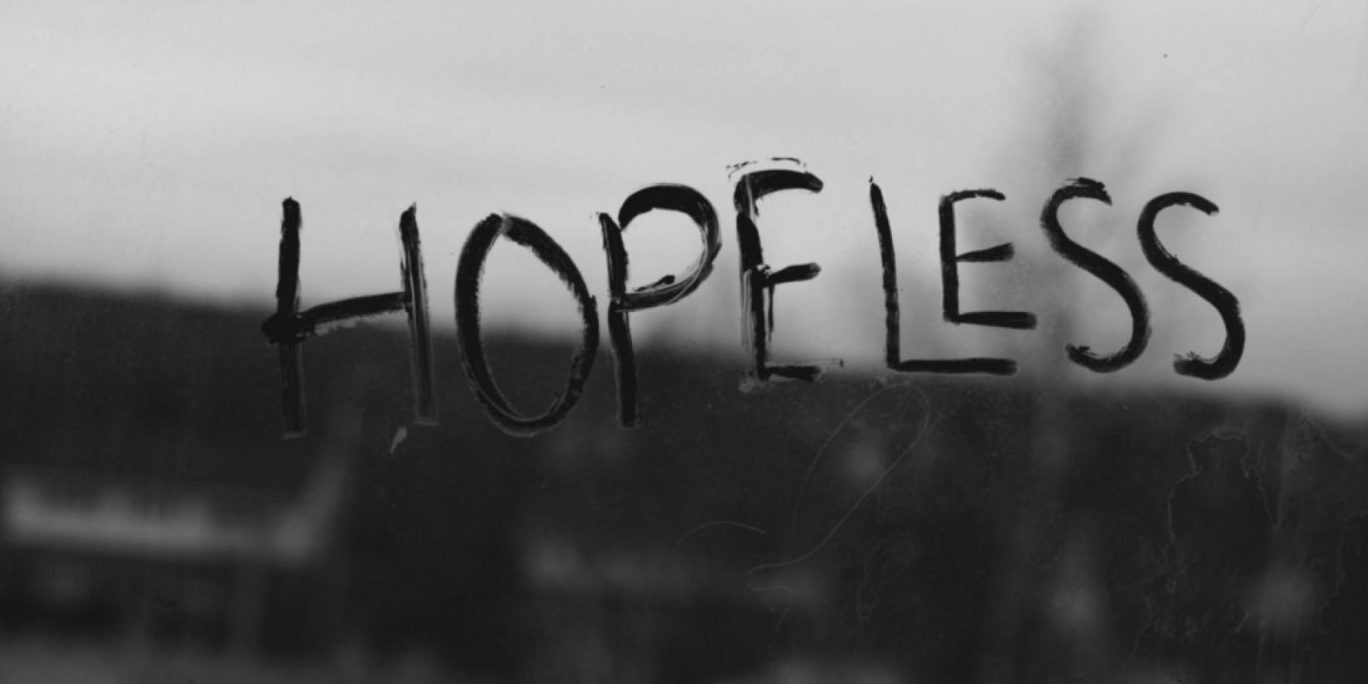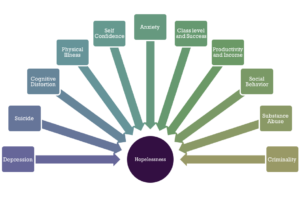
Heirs of Hopelessness: The Human Predicament (1)
Hopelessness is all around us. We see it in our families. We see it in our friends. We see it in ourselves. Researchers have explored the far-reaching impact of hopelessness on human well-being. Hopelessness is a force, a devastating power to be respected.
Drill down into many of our problems and you will find hopelessness. Many studies have done the drilling and have established hopelessness as the driving force in depression,[1] suicidal ideation and suicide,[2] distorted thinking,[3] poor physical health and illness,[4] poor self-confidence,[5] anxiety and dysphoria,[6] poor mental health,[7] gender stress and social class level,[8] low income and lack of success,[9] a poor problem solving skills and lack of productivity,[10] criminality,[11] negative social behavior,[12] and substance abuse.[13]
A brief sampling of the literature on hopelessness speaks to the power of this intangible reality. Many symptoms can be traced back to this root. It is the engine that drives painful experiences and destructive behaviors. The reach of hopelessness is breath taking when you consider its ability to touch every area of our lives.

This unwelcome guest and bitter companion is no stranger to us. Hopelessness is a force to be reckoned with. The research is right. We begin here because the research is pulling on a significant biblical thread. A thread in the storyline of this world. The story of you and me. Hopelessness is deeply imbedded into our experience, into our story.
[1] Richard T. Liu, Evan M. Kleiman, Bridget A. Nestor, Shayna M. Cheek, “The Hopelessness Theory of Depression: A Quarter Century in Review.” Clinical Psychology in Science and Practice (Vol 22:4, December 2015).
[2] Lyn Y. Abrahamson, Lauren B. Alloy, Michael E. Hogan, etc, “The Hopelessness Theory of Suicidality.” Suicide Science: Expanding Boundaries (Kluwer Academic Publishing, Boston 2000). E. David Klonsky & Alexis M. May, “The Three Step Theory (3ST): A New Theory Rooted in the ‘Ideation-to-Action’ Framework.” International Journal of Cognitive Therapy (Vol 8:2, 2015). Regina Miranda, Aliona Tsypes, Michelle Gallagher, etc, “Rumination and Hopelessness as Mediators of the Relation Between Perceived Emotion Dysregulation and Suicidal Ideation.” Cogn Ther Res (New York, 2013).
[3] Firdevs Savi Cakar, “The Effect of Automatic Thoughts on Hopelessness: Role of Self-Esteem as Mediator.” Educational Sciences: Theory and Practice (Educational Consultancy and Research Center, 2014), 11.
[4] Cakar, “The Effect of Automatic Thoughts on Hopelessness,” 11.
[5] Katherine Kandaris, “The Moderating Effect of Hope on the Relationship Between Emotional Approach Coping and Flourishing in College Students.” College of Education (DePaul University, 2013), 23.
[6] Cakar, “The Effect of Automatic Thoughts on Hopelessness,” 11.
[7] Peter Halama & Maria Dedova, “Meaning in Life and Hope as Predictors of Positive Mental Health: Do they explain residual variance not predicted by personality traits?” Studia Psychologica (Vol 49:3, 2007), 193.
[8] Cakar, “The Effect of Automatic Thoughts on Hopelessness,” 12.
[9] C.R. Snyder, Hal S. Shorey, Jennifer Cheavens, etc, _Hope and Academic Success in College.” Journal of Educational Psychology (Vol 94:4, 2002). Cakar, “The Effect of Automatic Thoughts on Hopelessness,” 11.
[10] Cakar, “The Effect of Automatic Thoughts on Hopelessness,” 11.
[11] Michelle A. Tomishima, “Hopelessness as a predictor of juvenile delinquency in at-risk youth.” Master’s Theses SJSU ScholarWorks (San Jose State University, 1995).
[12] Tomishima, “Hopelessness as a predictor of juvenile delinquency in at-risk youth,” 5.
[13] Tomishima, “Hopelessness as a predictor of juvenile delinquency in at-risk youth,” 3.



